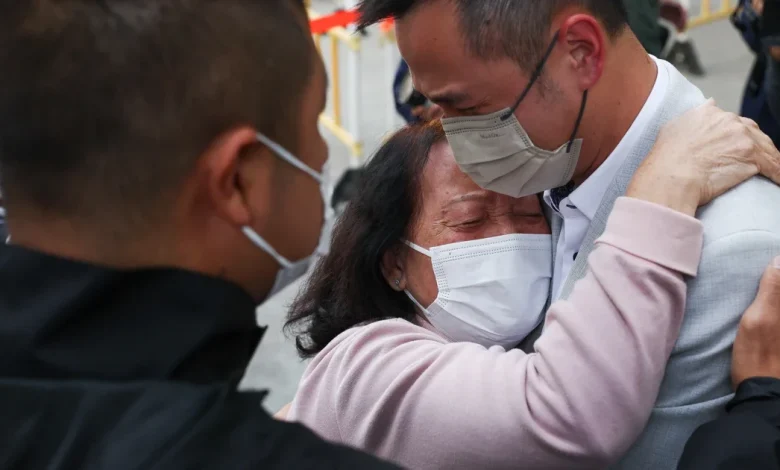Bamboo scaffolding, an iconic part of Hong Kong, faces scrutiny in deadly fire probe

While no officials have directly linked the fire to the bamboo itself, they have said that the rapid spread of the fire may be linked to the mesh netting used to cover the scaffolding.
“The protective netting, protective films, waterproof tarpaulins, and plastic sheets on the external walls of the building in question burned much more intensely and spread significantly faster than materials that meet safety standards. We find this to be unusual,” the city’s security secretary, Chris Tang, said early on Thursday.
Derek Armstrong Chan, deputy director of Fire Service operations, also said scaffolding falling from upper floors had complicated rescue efforts.
Asked about the role the netting played in the fire, he told a press conference on Thursday: “Our preliminary view is that the fire spreading so fast is likely related to these materials.”
The tradition of bamboo scaffolding has endured in Hong Kong even after regulators in mainland China mandated decades ago that it be replaced with steel and aluminum.
“Bamboo scaffolding has its benefits,” said Yau Yung, a professor at Lingnan University in Hong Kong who studies housing. “Not just because of the low cost, but also it can be flexible.”
The practice has long been a source of cultural pride in Hong Kong, which featured bamboo scaffolding in its pavilion at this year’s Venice Biennale architecture exhibition. But it’s a profession with an aging workforce, with only about 2,500 bamboo scaffolding masters currently registered in the city, according to official figures.
In March, the Hong Kong government’s Development Bureau said that going forward, 50% of new public building projects would be required to use metal scaffolding. It said that although bamboo scaffolding that complies with regulations is structurally safe, metal scaffolding would “better protect the safety of staff” and bring Hong Kong in line with “advanced international and mainland cities.”
At the time, the announcement prompted public laments that Hong Kong, a former British colony turned Chinese territory, was losing another piece of its identity at a time when its freewheeling democracy and legal autonomy has already been eroded by Beijing’s crackdown on dissent following antigovernment protests in 2019.
It came amid wider concerns about a series of fatal accidents on Hong Kong construction sites, not all of them involving bamboo scaffolding. According to the Hong Kong Labor Department, there were 22 deaths involving bamboo scaffolding from 2018 to October 2024.
Though fire risk was not the emphasis of the Hong Kong government announcement, experts say it’s a good reason to shift to metal scaffolding.
“Bamboo material is combustible,” said Jiang Liming, an associate professor at the Hong Kong Polytechnic University (PolyU) who focuses on fire safety engineering.





